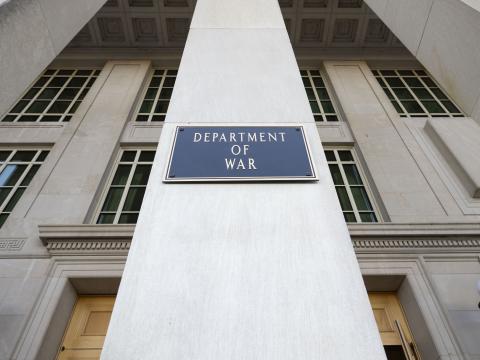Disruptive by Design: Why We're Not Ready to Fight Agroterrorism
Recent legislation and a survey of the nation’s emergency management capabilities underscore the need to prepare even for low-probability but high-impact acts of agroterrorism.
Agroterrorism, a subset of bioterrorism, is defined in a Congressional Research Service report as “the deliberate introduction of an animal or plant disease with the goal of generating fear, causing economic losses or undermining social stability.” The word is rarely used, and fortunately, an event is even more rare. Rarer still are common understanding and readiness among U.S. agencies facing this threat. However, recent legislation and a survey of the nation’s emergency management capabilities underscore the need to prepare even for low-probability but high-impact acts of agroterrorism.
In June, President Donald Trump signed the Securing Our Agriculture and Food Act, mandating that the U.S. Department of Homeland Security (DHS), the Agriculture Department (USDA) and the greater national emergency management infrastructure protect agricultural systems from agroterrorism. The act formalizes cooperation already occurring in the Strategic Partnership Program Agroterrorism Initiative, a collaboration of the DHS, the USDA, the FBI and the Food and Drug Administration. The initiative establishes and employs centers of excellence, modeled after the DHS Fusion Center network, to quantify and then remedy vulnerabilities in agriculture, reports the Journal of Political Science and Public Affairs. Coupled with the legislative push to combat these weaknesses is the National Bio and Agro-Defense Facility, a $1.25 billion laboratory being built on Kansas State University’s campus with the explicit purpose of studying how to fight agroterror threats.
These actions have proved divisive, mostly because the agriculture industry is receiving more resources and government oversight to protect against a scenario yet to occur. However, the industry is worth approximately $1 trillion and contributes to about 10 percent of all employment in the United States, according to the USDA. Given this level of capital, the lack of standardized security and safeguarding procedures is alarming. Furthermore, securing the agriculture industry yields better outcomes in the event of natural disasters, livestock pandemics and crop blights.
In addition to other government efforts, the World Health Organization (WHO) coordinates responses using resources from the Global Outbreak Alert and Response Network (GOARN). The GOARN is a collaboration of institutions and networks that pools human and technical resources to rapidly ID, confirm and respond to international crises.
The options for attacking the agriculture industry are many and relatively simple to execute. Operations would most likely focus on introducing and spreading a pathogen in a key livestock population, given animal overcrowding in most facilities, weakened animal immune systems due to overuse of commercial antibiotics, and no culture of employee readiness or reporting. The next most likely form of attack would be a waterborne pathogen targeting a staple crop’s irrigation system or an airborne pathogen being introduced into the seed population of a staple crop before mass distribution.
Any of these delivery systems or harmful agents are dangerous because they can be well-researched, easily obtained and launched with relative anonymity. All have compounding, exponential growth potential. Without proper readiness procedures, an attack would cost billions, devastating the economic security of the United States and potentially cascading into global food shortages, according to research by Rand National Security Research Division.
The threat is serious, the return on investment beyond tempting. The precedent certainly exists for acts of agroterrorism to occur. So why has such a doomsday act never happened?
Most experts attribute the lack of attacks on agriculture to the lack of a single, high visibility point of focus for the media. Terror organizations or groups aim to cause panic and claim immediate responsibility for striking their targets. Attacks on livestock populations, crops and potable water don’t have immediate consequences, are difficult to attribute and aren’t guaranteed to evolve past their point of origin. Still, it should be noted that when U.S. Navy SEAL Team 3 secured a series of caves in Afghanistan in 2002, the team reportedly found a massive cache of al-Qaida documents detailing an attack on the American food supply.
The threat of agroterrorism should not be ignored. Securing the food supply will remain a divisive issue, but this can be mitigated with outreach programs designed to educate the public on the risk of agroterrorism. Even more critical is adopting an industry standard term and establishing a common understanding among law enforcement, intelligence and agriculture sectors.
Ryan Larson is course production manager and research associate at Pherson Associates, an analytic training company in Reston, Virginia. The views expressed here are his own.




Comments